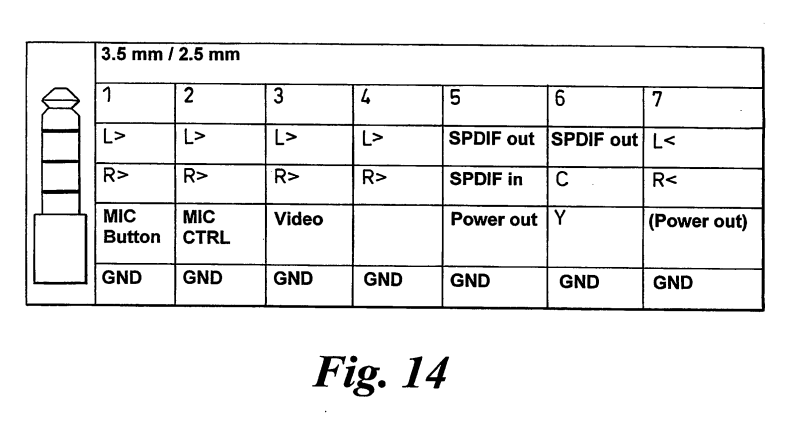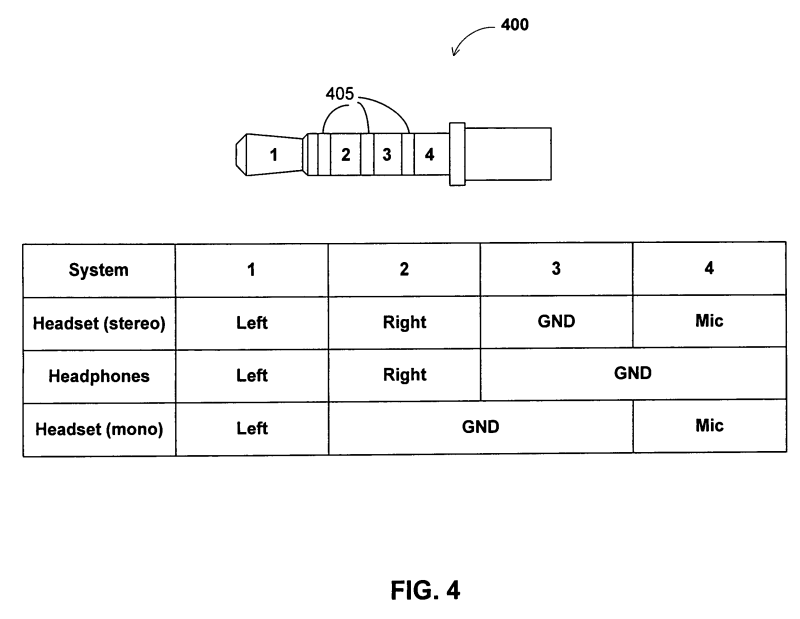So I’m looking for a pair of cables to adapt a 4-pin 3.5mm TRRS headphone + mic jack to 2 x 3-pin 3.5mm TRS jacks, because I want to do a little audio synthesis experimentation with my Android tablet and phone. But I’ve now learned that just because they wanted to and for no good reason beyond screwing consumers for overpriced accessories, Apple took an existing standard, forked it, and then patented it.
Now I’m not sure which cable to buy, because no one clearly marks the standard to which their cables conform, and the cables are incompatible with one another, because the bureaucracy was asleep on the job and for low-end commodity goods like wire and headphone splitters, who actually wants to take the time?
Here is the schematic from Nokia’s patent filing “Detection, Identification and Operation of Pheripherals Connected Via an Audio/Video-Plug to an Electronic Device” (October 24, 2005), columns #1 and #2 being most relevant:

Here is the schematic from Apple’s patent filing “Audio I/O headset plug and plug detection circuitry” (January 5, 2007), row #1 being most relevant:

Note that the only difference is the reversal of the microphone and ground positions. This is 100% bullshit masquerading as progress. I don’t see how this isn’t consumer hostile or how this in any way fosters healthy competition. I don’t see how the USPTO and other patent-granting bodies could see this and somehow consider it a reasonable thing to allow. This helps no one, not even Apple’s customers. It’s just a spiteful bit of “engineering”.
So when you wonder why you can’t just reuse that headset + mic you got for your Apple device on any other device you may have bought on the open market, this is the reason why.
(* Hat tip to the Norwegian Wikipedia page that stoked my curiosity.)
Update: Ok, I realize this post is a bit unfair to Apple, this is ultimately a problem with the way intellectual property is assigned. It is, of course, not the government’s job to decide the pinout for an audio headset. But it still strikes me as extremely stupid that intellectual property rights cause situations like this to happen. Since the functionality to control your phone or music player via an inline controller + mic has spread to all of the devices on the market anyway, what was the point of utterly bifurcating something simple into two incompatible standards? It seems to have been done only so that one party could avoid the other party invoking their IPRs, to the detriment of everyone.